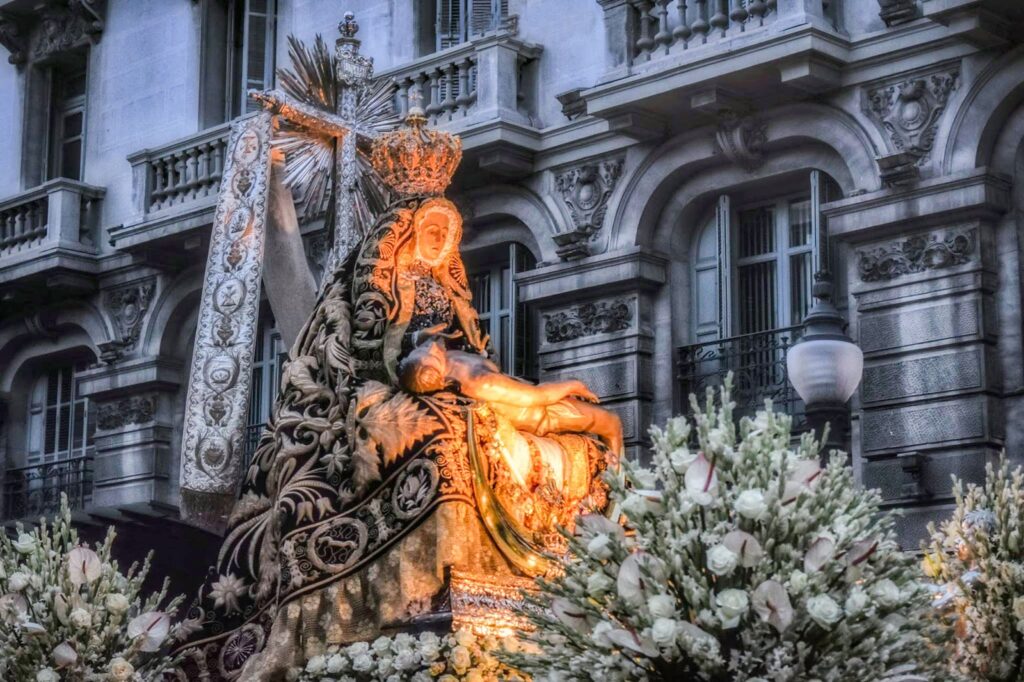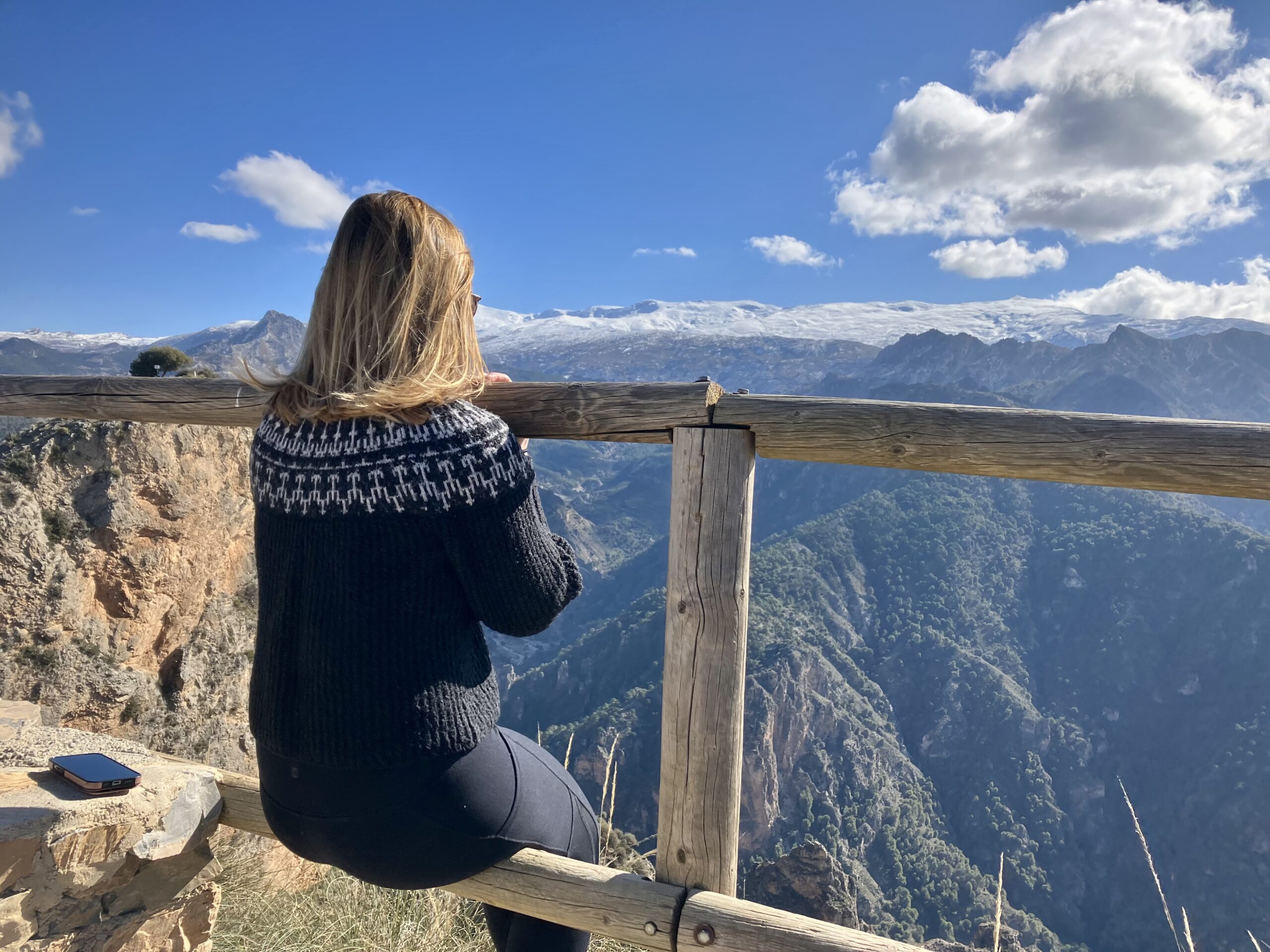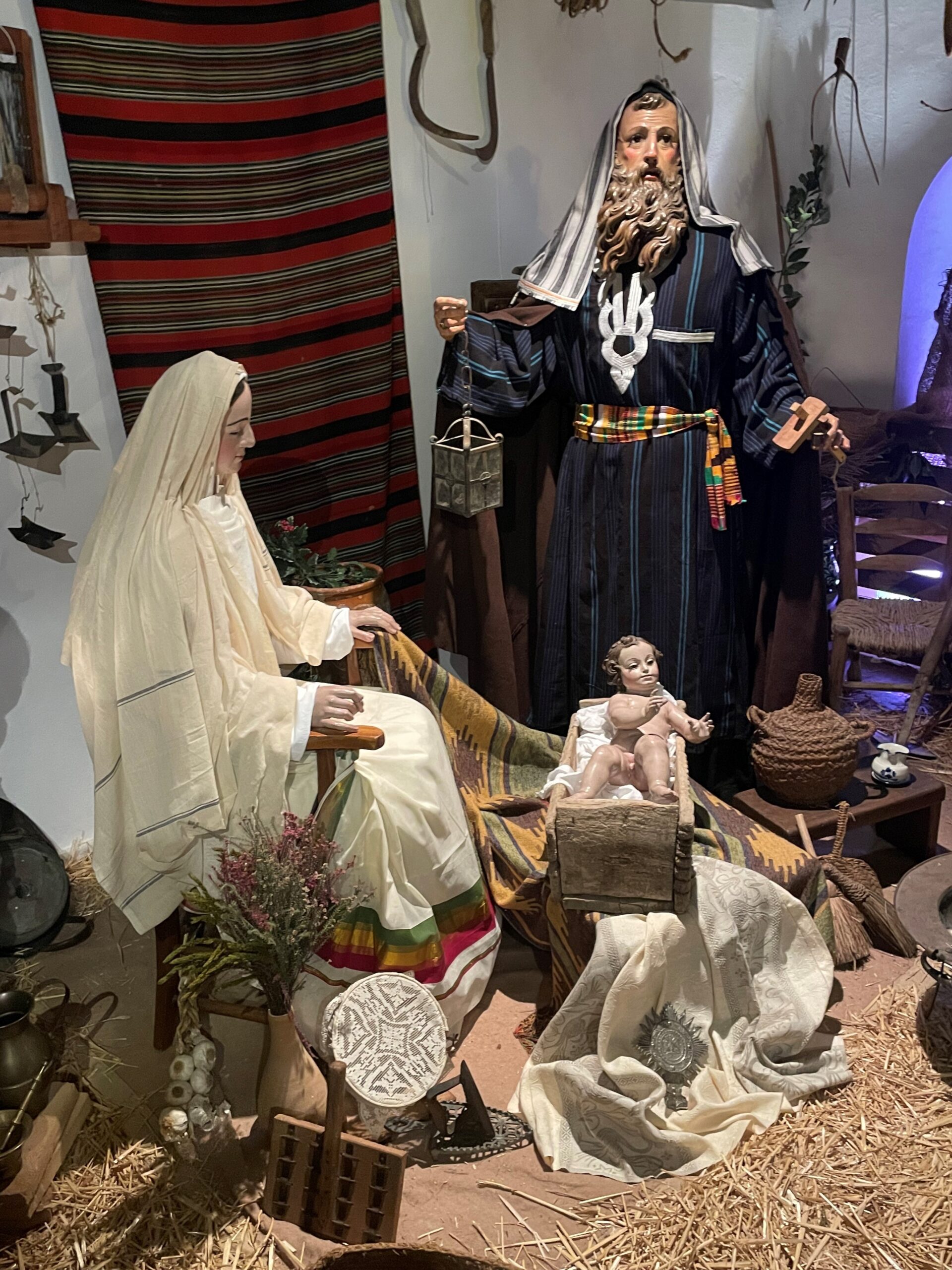Granada, a city renowned for its rich history and stunning architecture, is deeply and ceremonially connected to its patroness, Our Lady of Sorrows – Nuestra Señora de las Angustias. For those visiting this beautiful city for the first time, understanding the significance of Our Lady of Sorrows, visiting the Basilica erected in her honor and participating in the vibrant celebrations surrounding her feast can enhance the experience and appreciation of Granada.
THE ARRIVAL OF OUR LADY: A HISTORIC GIFT
The story of Our Lady of Sorrows in Granada is tied to a significant historical event. In 1618, the statue of Nuestra Señora de las Angustias, created by the Spanish sculptor Gaspar Becerra, was officially transferred to Granada from Loja. The introduction of this venerated effigy marked a turning point in Granada’s religious and cultural life, establishing it as the city’s patroness.
Although Queen Isabel la Católica had passed away by 1504, her influence on the religious landscape of Spain, including here in Granada, laid the groundwork for such acts of devotion. Her support for religious initiatives and consolidation of Catholicism contributed to an environment where religious symbols, relics and figures such as Nuestra Señora de las Angustias were highly valued and venerated.
THE BASILICA OF OUR LADY OF SORROWS
The Básilica de las Angustias, located in the heart of Granada, is a significant religious and architectural landmark. Construction of the basilica began in 1618, the same year the revered statue was brought to the city. The basilica showcases a blend of Renaissance and Baroque styles, reflecting the artistic influences of the period.
The grand façade of the basilica, with its intricate details, and the beautifully adorned interior, including a magnificent altar and stunning artwork, are a testament to the city’s devotion and craftsmanship of the time. The basilica serves as a major pilgrimage site, drawing visitors who come to admire its beauty and seek spiritual comfort. This unique church is open to visitors for free and can also be explored on weekends before masses, although cultural visits are not allowed when mass is being celebrated.

THE BROTHERHOOD OF THE PATRONESS
The Brotherhood of Our Lady of Sorrows, la Hermandad de Nuestra Señora de las Angustias, was established to promote the veneration of the patroness and organize the festivities surrounding her feast. Founded shortly after the arrival of the Virgin’s statue in Granada, the brotherhood plays a crucial role in maintaining and celebrating the traditions associated with Our Lady of Sorrows.
Members of the brotherhood are responsible for organizing processions, religious ceremonies and cultural events that honor the patroness. Their dedication ensures that these traditions are preserved and passed onto future generations, making the brotherhood an integral part of Granada’s cultural and religious life.
THE FLORAL OFFERING: A TRADITION OF DEVOTION
In the days leading up to the grand feast of Our Lady of Sorrows, Granada celebrates with a special tradition known as the Ofrenda Floral, or floral offering This event is a beautiful expression of the city’s devotion and takes place annually on September 15th.
During that day, thousands of flowers are brought to the basilica by locals and visitors alike. These flowers are used to create elaborate floral displays that adorn the basilica, turning it into a stunning tapestry of colors and fragrances. The tradition symbolizes gratitude and reverence towards the patroness, and it transforms the basilica into a breathtaking sight.
The floral offering is a unique opportunity for both residents and tourists to engage in Granada’s religious and cultural life. It’s a moment of collective celebration and an expression of the city’s deep-rooted faith and community spirit.
Flower bouquets, priced around 5€, are sold in the nearby square next to Fuente de las Batallas. With the flowers in hand, you can simply follow the crowds towards the basilica and place them in the giant wall-like structure surrounding its entrance.
THE PROCESSION: A SPECTACLE OF FAITH
One of the most anticipated events in Granada is the annual procession honoring Our Lady of Sorrows, held on the last Sunday of September. This vibrant procession features the patronness’ figure being carried through the streets of Granada in a grand display of devotion.
The figure of Nuestra Señora de las Angustias is traditionally carried by members of the Brotherhood of Our Lady of Sorrows in a beautifully adorned float. The float is accompanied by a throng of worshippers who follow the procession, many of whom reach out to touch the sculpture as it passes by. This act of touching the figure is believed to bring blessings and fulfill prayers, adding a deeply personal element to the celebration.
During the procession, the crowd often erupts in chants and hymns, with traditional exclamations of “¡Viva la Virgen de las Angustias!” (Long live the Virgin of Sorrows) echoing through the streets. The atmosphere is charged with a sense of communal reverence and joy, as people from all walks of life come together to honor their patroness.
On the day of the procession, the city center also turns into an outdoor autumn market with artisan stalls lining downtown streets and plazas. Among the most sought-after items is the Tarta de la Virgen, a sweet, pumpkin-filled pastry baked in wooden ovens especially for this celebration, which can be bought at local pastry shops and convents.
With upwards of 200,000 locals turning out for the annual festivities, the day of the floral offerings and the procession are great ways to partake in and experience local life, culture and deeply-rooted religious traditions reminiscent of Semana Santa in the spring.
The Basics
- The festivities take place on September 15th and the last Sunday of September.
- The Basilica is located in the city center at Carrera de la Virgen 42.
- More information can be found at: basilicadelasangustias.org.





